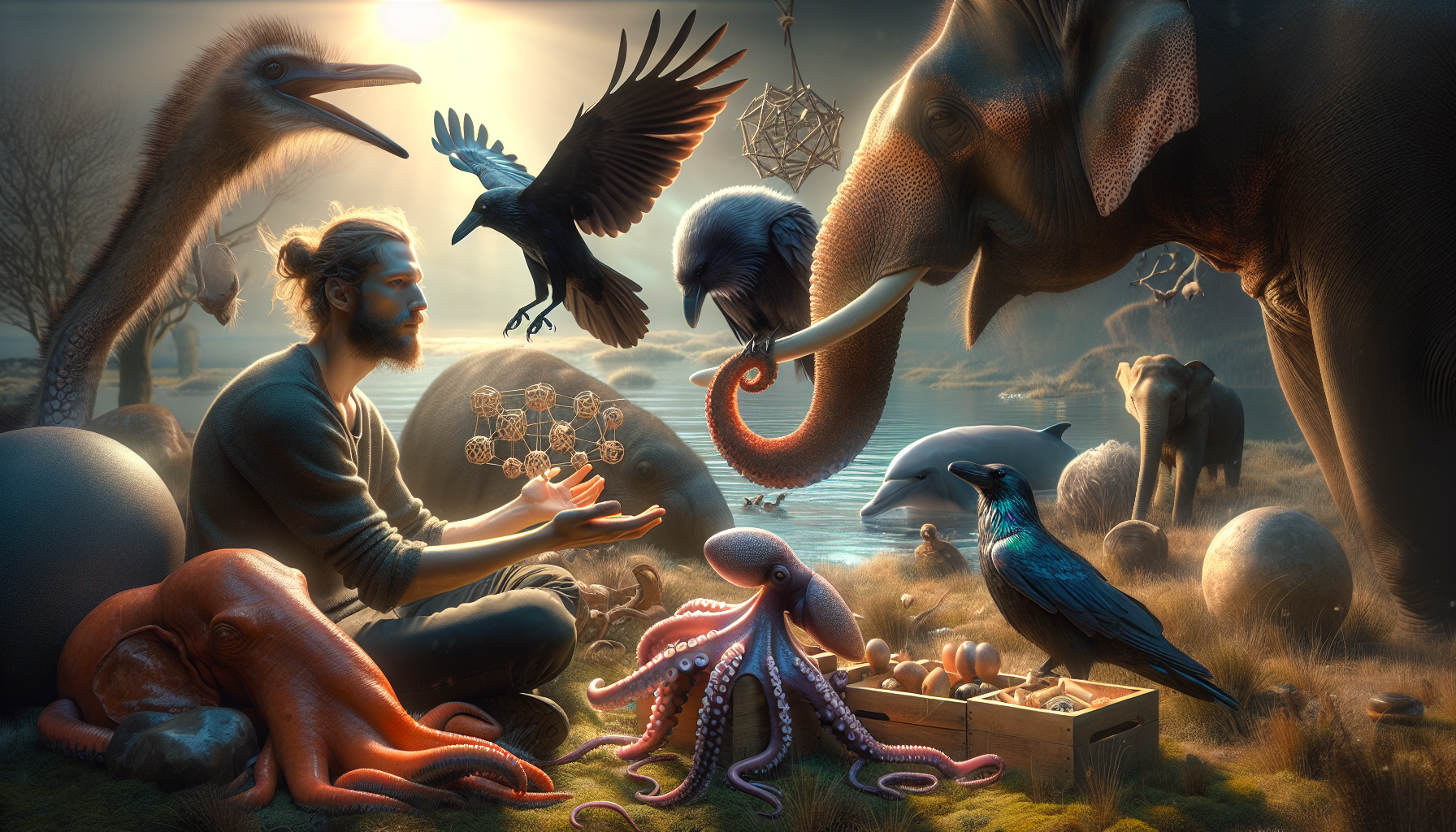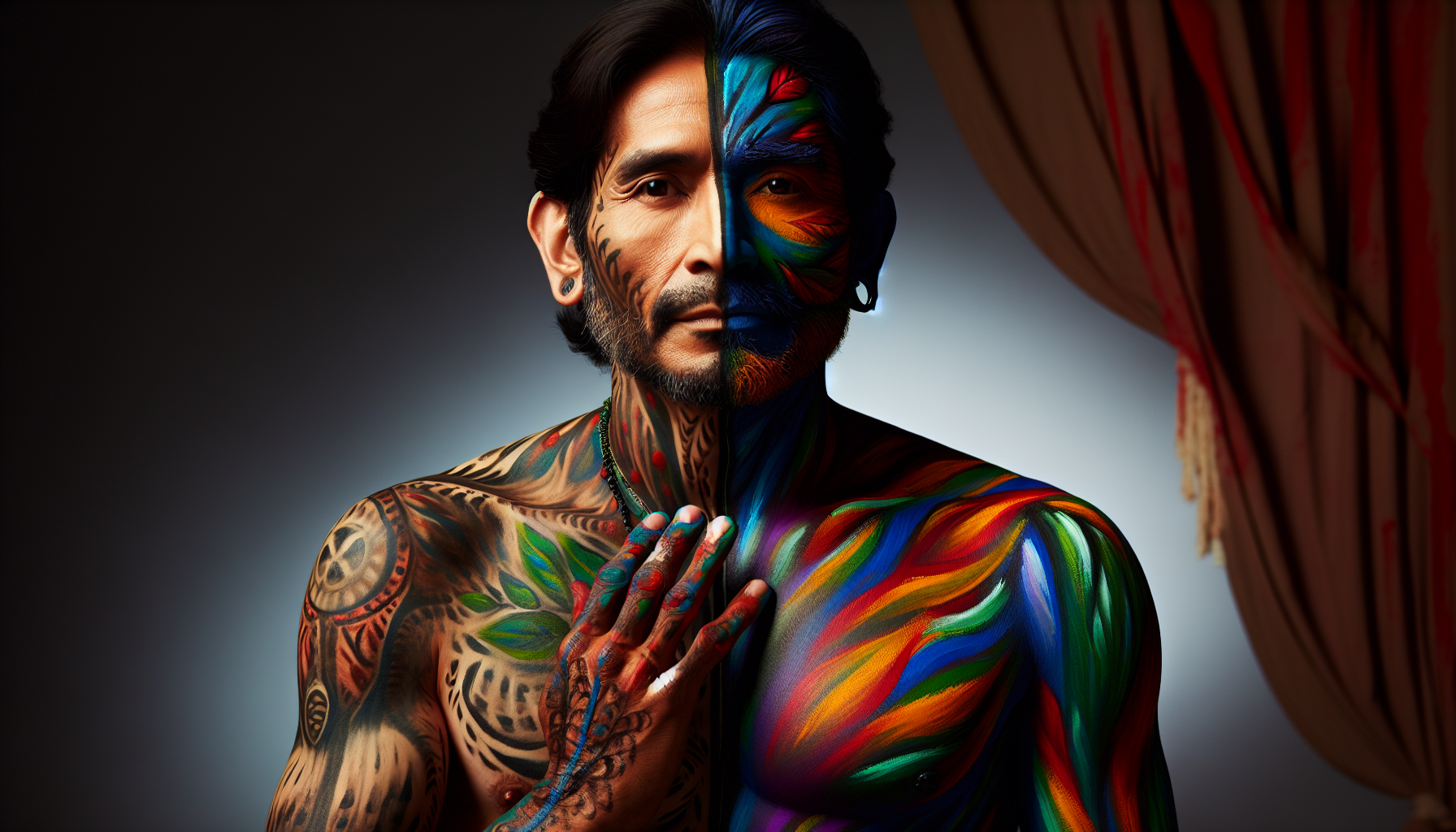In a world where communication is dominated by spoken and written words, it’s easy to overlook the profound impact of non-verbal expression. Yet, long before the first words were ever inscribed on papyrus or whispered in the cradle of civilization, humanity was communicating through a universal language that transcended the barriers of time and culture: gestures. Welcome to the fascinating realm of gesture language, an ancient yet enduring mode of interaction that has shaped the way humans connect and convey meaning for millennia. In this exploration of “Unlocking the Past: The Power of Gesture Language in Historical Communication,” we will delve into the origins, evolution, and enduring influence of this silent symphony of movement 🎨.
Our journey begins in the shadowy recesses of prehistory, where early humans, lacking the complex linguistic structures we now take for granted, relied heavily on gestures to express their needs, desires, and emotions. These primal movements were the first tools of communication, laying the groundwork for the sophisticated languages that would later emerge. We’ll uncover the ways in which gesture language served as a bridge between individuals and groups, facilitating cooperation, social bonding, and even survival in an often harsh and unforgiving environment. From the deliberate hand signals used in hunting parties to the expressive dance rituals performed around communal fires, gestures formed an essential part of human interaction, imbuing actions with meaning and intention.
As civilizations began to flourish and evolve, so too did the complexity of gesture language. In Ancient Egypt, Greece, and Rome, gestures became an integral component of rhetoric and public discourse, with orators mastering the art of physical expression to persuade and captivate audiences. We’ll explore how gesture language was codified and taught, becoming an essential skill for leaders and influencers of the time. Beyond the public sphere, gestures also played a critical role in religious and ceremonial contexts, acting as conduits for divine communication and spiritual expression. As we traverse the annals of history, we’ll uncover the surprising ways in which these ancient gestures have left a lasting legacy, influencing modern-day practices in ways we might not even realize.
Yet, the story of gesture language is not confined to the distant past. In our contemporary world, where digital communication often eclipses face-to-face interaction, the power of gestures remains as vital as ever. We’ll examine how non-verbal cues continue to play a crucial role in shaping human relationships, from the subtle art of body language in personal interactions to the strategic use of gestures in political and professional settings. Furthermore, we’ll consider the fascinating intersection of gesture language and technology, exploring how innovations such as sign language interpretation and virtual reality are expanding the possibilities of non-verbal communication. By the end of our exploration, it will become abundantly clear that gesture language is not merely a relic of history but a living, dynamic force that continues to enrich and enliven human expression across time and space 🌟.
The Origins of Gesture Language
The use of gestures as a form of communication is as old as humanity itself. Before the development of spoken language, early humans relied heavily on gestural communication to convey messages. These gestures, which evolved into complex systems over time, were instrumental in the survival and social organization of prehistoric communities. The emergence of gesture language can be traced back to the necessity of conveying crucial information, such as the presence of danger or the availability of food sources, without the need for spoken words.
Throughout history, various cultures have developed their own unique systems of gestures. These gestural languages were influenced by environmental factors, social structures, and the availability of resources. For instance, Native American tribes utilized sign language to communicate across different linguistic groups. This form of communication was not only efficient but also facilitated trade and alliances. In contrast, many monastic orders in medieval Europe developed their own silent gestural codes to maintain vows of silence while still allowing for necessary communication within their communities.
Today, scholars continue to study ancient gestures to uncover insights into past societies. The analysis of gestures depicted in art, such as cave paintings and sculptures, provides valuable information about the daily lives and cultural practices of our ancestors. Additionally, the study of ancient gestural languages can offer a deeper understanding of the cognitive development of early humans and the evolution of communication as a whole.
Significance of Gestural Communication in Ancient Societies
Gestural communication played a crucial role in the social dynamics of ancient societies. It enabled individuals to express emotions, intentions, and commands effectively. This form of communication was particularly vital in contexts where verbal communication was impractical or impossible, such as during hunting or in environments with significant ambient noise.
In many cultures, gestures were not only a means of communication but also a way to establish social hierarchies and convey respect. Specific gestures were associated with power, authority, and subordination. Understanding these gestural codes was essential for navigating the social landscape of ancient communities, ensuring smooth interpersonal interactions and the maintenance of social order.
Furthermore, gestural language served as a bridge between different linguistic groups, allowing for interaction and cooperation. This was especially important in diverse regions where multiple languages were spoken. Gestures provided a universal form of communication, facilitating trade, diplomacy, and cultural exchange.
The Evolution of Gesture Language
As societies evolved, so did their gestural languages. With the advent of spoken language, gestures became more refined and were often used to complement verbal communication. This evolution can be seen in the way gestures have been integrated into various forms of performance art, such as dance and theater, where they enhance storytelling and emotional expression.
The development of written language further influenced the role of gestures in communication. While writing provided a permanent and precise means of recording information, gestures continued to play a vital role in everyday interactions. They added nuance and emphasis to spoken words, enriching the communicative experience. In many cultures, specific gestures became associated with particular meanings, creating a shared visual vocabulary that was understood across generations.
Today, the study of gestural language is an interdisciplinary field, drawing on insights from anthropology, linguistics, psychology, and neuroscience. Researchers are exploring how gestures interact with spoken language, how they are processed in the brain, and how they can be used to improve communication in various contexts. These studies are uncovering the profound impact gestures have on human interaction, demonstrating that they are not merely an accessory to speech but a fundamental component of communication.
Gestures in Modern Communication
In contemporary society, gestures remain an integral part of communication. They are used to convey emotions, emphasize points, and even replace words entirely in certain contexts. The rise of digital communication has also influenced the way gestures are used, with emojis and gifs serving as digital representations of gestures that convey tone and emotion in written text.
Furthermore, gestures play a significant role in non-verbal communication, which is crucial in a variety of settings, from business negotiations to personal relationships. Understanding the nuances of gestural language can enhance one’s ability to communicate effectively, fostering better understanding and connection between individuals.
Watch this insightful video on the power of non-verbal communication: “The Power of Non-Verbal Communication” by TEDx Talks.
Comparative Analysis of Gesture Languages
Gesture languages vary significantly across cultures, each possessing unique characteristics that reflect the values and norms of their respective societies. These differences can be seen in the specific gestures used, the contexts in which they are employed, and their cultural significance.
| Culture | Gesture Example | Meaning | Cultural Context |
|---|---|---|---|
| American | Thumbs up | Approval/Good job | Widely used in informal contexts |
| Japanese | Bowing | Respect/Greeting | Formal and informal interactions |
| Italian | Finger pinch | Question/Disbelief | Common in everyday conversation |
As we explore these cultural variations, it becomes clear that gestures are deeply embedded in the social fabric of societies. They are not only a means of communication but also a reflection of cultural identity and values. By studying these gestures, we gain a deeper understanding of the cultural contexts in which they arise and the ways in which they shape human interaction.
The Future of Gesture Language
As technology continues to advance, the role of gesture language in communication is likely to evolve. Innovations such as virtual reality and augmented reality are creating new opportunities for gestural communication, allowing users to interact with digital environments in more intuitive and natural ways. These technologies are blurring the lines between physical and digital communication, expanding the possibilities for human interaction.
Moreover, the increasing awareness of the importance of non-verbal communication in fields such as education, healthcare, and business is driving research into the development of new gestural languages and systems. These innovations have the potential to enhance communication in diverse contexts, improving accessibility and understanding for individuals with different communication needs.
In conclusion, gesture language remains a powerful and dynamic form of communication that continues to shape human interaction in profound ways. As we unlock the secrets of the past through the study of gestures, we gain valuable insights into the evolution of communication and the rich tapestry of human culture.

Conclusion
In wrapping up our exploration of “Unlocking the Past: The Power of Gesture Language in Historical Communication,” we find ourselves standing at the fascinating intersection of history, linguistics, and anthropology. Our journey has illuminated the profound impact gesture language has had across civilizations and time periods, highlighting its crucial role as a tool for communication and cultural expression.
Throughout this article, we first delved into the origins of gesture language, examining how ancient civilizations used gestures as a fundamental means of communication long before the advent of spoken or written language. From the symbolic hand signs in the caves of Lascaux to the sophisticated gestural systems of the ancient Egyptians, gestures have transcended the barriers of silence, enabling humans to express complex ideas and emotions.
We then explored the rich diversity of gesture languages across different cultures and time periods. For instance, the intricate hand movements in Indian classical dance, known as mudras, encapsulate entire stories and philosophies. Similarly, the Native American Plains Sign Language stands as a testament to the ingenuity of indigenous peoples, allowing for communication across linguistic divides. These examples underscore how gesture language not only reflects but also shapes cultural identity and social interaction.
As we progressed, we examined the cognitive and neurological aspects of gesture language. Research has demonstrated that gestures are not mere add-ons to speech but are integral to the process of thinking and communication. They engage multiple areas of the brain, enhancing memory retention and understanding. This underscores the argument that gesture language is not merely a relic of the past but a vital component of human cognition.
Moreover, the article highlighted the enduring relevance of gesture language in contemporary society. In an increasingly globalized world, where verbal language can often fall short, gestures serve as a universal mode of communication, bridging cultural and linguistic gaps. From the business world to social media platforms, gestures are reinventing how we convey messages and connect with others.
The exploration of gesture language also touched upon its significance in education and technology. In classrooms, educators are integrating gestures to enhance learning experiences, fostering better engagement and comprehension among students. Technological advancements, such as virtual reality and motion capture, are further expanding the potential of gestures, creating immersive environments that simulate real-life interactions.
The importance of understanding and appreciating gesture language cannot be overstated. It is not just a study of the past but a gateway to enhancing our present and future communications. By acknowledging the power of gestures, we can foster inclusivity and empathy, connecting with others on a deeper, more intuitive level. 🤝
In conclusion, the study of gesture language is not merely an academic pursuit; it is a journey into the essence of human connection. We invite you, dear reader, to reflect on the gestures you use in your daily life. Consider how they shape your interactions and express your unique cultural background. We encourage you to explore the rich tapestry of gestures from around the world, gaining insights into different ways of thinking and being.
As you ponder these themes, we urge you to share your thoughts and insights with others. Engage in conversations about the role of gesture language in your life and community. Share this article with friends and colleagues who might find this topic intriguing. Let’s continue this dialogue, enriching our understanding of the world and each other.
To delve deeper into the fascinating world of gesture language, we recommend exploring resources such as the works of David McNeill on gesture and thought, or the extensive research available at the Max Planck Institute for Psycholinguistics here. These resources provide a wealth of information for those eager to learn more about the profound impact of gesture language on human history and communication.
Thank you for joining us on this enlightening journey. May the insights gained inspire you to embrace the power of gestures in your own life, fostering connections that transcend words and enrich the human experience. 🌍
Toni Santos is a visual storyteller and cognitive explorer whose work delves into the mental landscapes of ancient cultures—revealing how different civilizations perceived reality, memory, and meaning long before modern psychology existed. Through symbolic imagery and narrative inquiry, Toni brings to life the divergent ways of thinking that shaped lost worlds.
His creative path is guided by a fascination with non-linear logic, oral cosmologies, and the mythic frameworks that once guided decision-making, emotion, and identity. From memory temples carved in stone to visual languages encoded in textiles, every piece Toni creates reflects the vast cognitive diversity of the human story.
With a foundation in visual design and cultural semiotics, Toni blends analytical depth with artistic expression. His work goes beyond historical reconstruction—it reawakens the embodied, intuitive, and ritual-based intelligence of ancient minds, inviting us to question the assumptions of modern thought.
As the mind behind Vizovex, Toni curates visual studies, essays, and immersive content that explore forgotten epistemologies—ways of knowing that connected people to myth, land, and each other in profoundly different ways.
His work is a tribute to:
The symbolic intelligence of pre-modern cultures
The neural diversity embedded in ancient rituals and storytelling
The deep memory systems that shaped identity and perception
Whether you’re a researcher, an artist, or a seeker of hidden wisdom, Toni invites you to enter a space where cognition is culture, and where the past speaks through signs, cycles, and symbols—one myth, one memory, one mind at a time.





